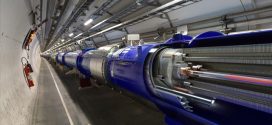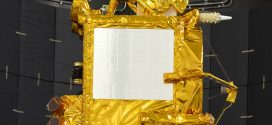Planet earth is facing significant challenges, most of which can be linked to human activity. It is possible that earth may face a major catastrophe in the future, which will make it impossible for humans to live here. Some examples include large scale nuclear war, biological warfare, extreme climate change, ecological collapse, pandemic, super volcanic eruption, etc.
In such situations, humanity will make its best efforts to survive. One option that can be considered is moving out of earth to other nearby planets. Two primary options are moon and Mars, which can be reached with current technology. This brings up the question as to which will be easier to colonize – moon or Mars. To understand that, here are some important things to know.
Distance – Moon is the closest celestial object to earth at 384,400 km. In comparison, Mars is quite far at 99.08 million km. So, if we consider only the distance, then Moon is clearly easier to reach. However, colonization is an entirely different ballgame, where Mars can be better placed to support humans over the long-term.
Atmosphere – One of the biggest challenges of colonizing Moon is that it has no atmosphere. On the other hand, Mars has a thin atmosphere that can provide some level of protection against radiation and small asteroids. Moon does not have any type of natural protection against radiation.
Climate and temperature – Moon is an unforgiving surface, with temperatures reaching 250 degrees Fahrenheit (120° C) during the day and -208 degrees Fahrenheit (-130° C) at night. This will make human activity very difficult and slow on moon. In comparison, Mars has relatively low temperature. That’s because Mars is further away from the sun. Equatorial regions of Mars would be best for human habitat, as these have temperatures of around 68 °F (20 °C) at noon time.
Oxygen – While moon is completely devoid of oxygen, Mars has just around 0.16 percent oxygen. On both moon and Mars, humans will initially need to carry their own oxygen. Oxygen producing factories can eventually be setup. Both moon and Mars have oxygen trapped in the form of oxides. Frozen ice is another resource that can be used to create oxygen. In case of Mars, oxygen can also be created by compressing and heating carbon dioxide.
Water – On both moon and Mars, water exists in the form of ice. However, the water resources are fairly limited on both moon and Mars. Getting potable water easily like we have on earth will be one of the most significant challenges of colonizing moon and Mars.
Gravity – On moon, gravity is around 1/6th that of earth. In comparison, gravity on Mars is 3/8th that of Earth. As gravity is one of the key determinants for long-term survival, Mars is better placed than moon in this context.
Terraforming – Many experts believe that Mars has more potential for terraforming in comparison to moon. This is crucial to achieving self-reliance. Mars is bigger and has more resources that can be utilized for terraforming. Achieving self-reliance in basic necessities such as food, water, air, etc., can be faster on Mars.
It is evident that colonizing both moon and Mars is not going to be easy. However, facts described above indicate that Mars may have more potential for long-term human colonization. It explains why most space organizations are aiming for Mars and not moon.
 Newspatrolling.com News cum Content Syndication Portal Online
Newspatrolling.com News cum Content Syndication Portal Online







